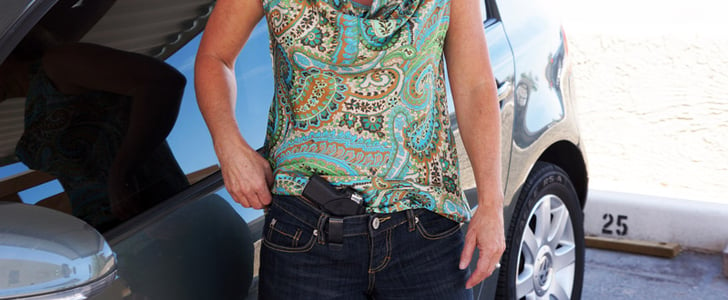Are you trained and certified to perform First Aid and/or CPR?
If you’re not, I cannot encourage it more highly, and here’s why: it’s even more important that the responsibly-armed citizen know how to handle traumatic injuries than anyone else.
As a concealed carrier, what you’re doing, essentially, is preparing for the worst in the defense of yourself, your family, and those you witness to be in mortal danger.
That’s exactly what a CPR and/or First Aid class will do for you!
To put in plainly, CPR/First Aid education is just a collection of knowledge you can acquire to become more confident and capable to respond to emergency medical situations. You know, just like a concealed carry course.
If you’re in for a penny, you’re in for a pound. Why would you not invest a couple of hours to be able to keep your community safe?
I’ll give you an example from my own life in which I didn’t need my concealed carry permit, but I sure as hell needed my First Aid/CPR education.
A coupe of years ago, I was headed home from a friend’s house late-ish at night. It was probably between 11:30 and 12:00, somewhere in that area. It was a weeknight, and traffic on my route was pretty low.
Totally out of the blue and about half a mile from the little duplex I called home, a man was sacked out on the road near the curb, just totally unconscious.
It was pretty hard not to notice him, since I had to swerve pretty hard to avoid running the dude over. Obviously, I pulled over and called 911, but 911 wouldn’t get there for another six minutes or so.
Because I had taken a First Aid and CPR class, I knew how to prioritize what needed to be checked, which I went through quickly. He’s breathing, check. His heart’s going steadily, check. His breathing is soft, but it’s regular. Not responsive to calls, shaking, or even some slapping on the face.
I considered a sternum rub — essentially putting an enormous amount of pressure on the sternum to stimulate consciousness — but the 911 operator urged me to wait until paramedics arrived just so it was sure to be done right. Fine by me. That’s less responsibility for yours truly, who just needed to guard this dude’s body until authorities arrive.
Paramedics did arrive in pretty short order after that, and about three minutes’ worth of sternum rubs brought him back to consciousness. Turns out the kid, who was like 18 or 19, had been trying to rush a frat and had been so loaded with alcohol that he was carted off to the hospital.
I felt bad for accidentally ratting out a kid underage drinker at the time, but now I realize that’s pretty dumb. I just hope he relaxed a bit after.
Now, did this particular scenario dictate everything I learned in First Aid? Not really. It certainly did help, but a lot of resolving this situation was about having the presence of mind to do what clearly needed to be done.
What First Aid did was help give me the confidence to act quickly and prioritize what to do first and why — that’s worthwhile, right there.
What do you think? Please share this on Facebook and Twitter and let us know!










![[WATCH] Officer Forced To Shoot Knife Attacker Who Comes Out Of Nowhere](https://imagedelivery.net/sbm_lYeJbALkepJgtmRD5w/concealednation.org/2019/01/ScreenHunter_1915-Jan.-20-09.03.jpg/w=728,h=381)



